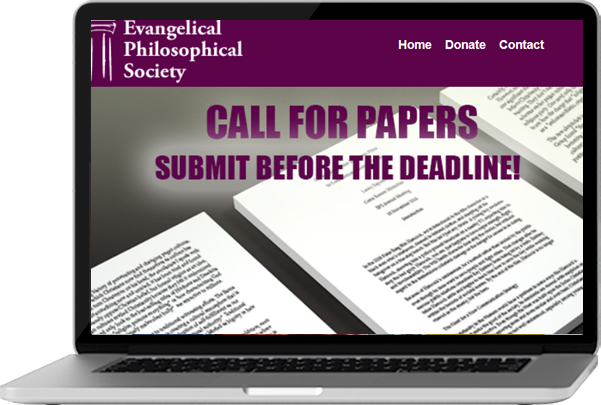 The Notre Dame Philosophical Review of the book The Image in Mind: Theism, Naturalism, and the Imagination (April 1, 2012), a book published with Continuum (2010), contains a number of misunderstandings.
The Notre Dame Philosophical Review of the book The Image in Mind: Theism, Naturalism, and the Imagination (April 1, 2012), a book published with Continuum (2010), contains a number of misunderstandings.
To begin with a positive account of our project, we believe that the debate between theism and naturalism involves the clash of two major images of reality: the image of the cosmos as an intentional creation, sustained in being by God, versus the image of the cosmos as non-purposive, non-teleological. In the latter case, the cosmos may look as though it is a creation (like a book), but it is not, hence Dawkins’ notion of a blind watchmaker or force (something that might look like a book but lack an author). We explore these two images, taking note of how these competing images come with profoundly different aesthetic features. To the new atheist, theism looks superstitious, claustrophobic, and so on, whereas to a theist the vision of creation is one of a vast terrain in which God may be encountered in an emancipatory, even glorious way. Those familiar with the work of C.S. Lewis, especially his book, The Discarded Image, will be familiar with how the history of ideas can be read profitably as a clash between two enormous, incompatible images of life; for Lewis in that book he was principally concerned with comparing the Medieval and Modern images of the world.
Along the way, we offer a defense of images and the imagination over against some philosophers who denigrate both, and we consider how certain phenomena fit different images. So, we argue that belief in libertarian freedom fits better in the theistic image, as does belief in objective moral norms. We address the problem that naturalism has with finding a place for consciousness and values. And we take aim at what we think are unfair images that the new atheists use in their critique of theism. For example, both Dawkins and Dennett picture their form of naturalism with the image of a crane versus a theistic philosophy which they picture as a skyhook. We object (we think quite rightly) that this is wrong from the get-go. First, the very notion of a skyhook is nonsensical. And to picture naturalism as a crane raises the question of what is holding up the crane or how it got there. Christian, or more generally, theistic philosophers raise the ultimate cosmological questions of the foundation of the cosmos. It would be more fair to compare theism and naturalism in the context of comparing an image of the cosmos as teleologically upheld by a good, mindful being versus a non-teleological one.
We do not set out to prove God’s existence, but we do offer reasons for regarding the theistic understanding of God over against naturalism as more fitting and reasonable.
Now to the review: Robert Pennock claims that we try to overturn the Dawkins-Dennett imagery by “‘re-picturing’ theism as itself a crane.” Pennock goes on: “But how does the image of the crane (a machine) fit with the authors’ original claim that the image of theism is a book.” First, we do not picture theism as a crane (though as noted below we use the image of two cranes to picture a cosmos that is created versus one that is not). And therefore there is no question of how the image of a crane and book need to be related. Perhaps Pennock thinks we picture theism as a crane (which suggests we propose to think of God as a crane or machine of some kind) from a mis-reading of the following paragraph:
The way Dennett and Dawkins image theism and naturalism is deeply problematic. The very idea that theism is akin to a skyhook is to evoke a tradition of picturing the gods floating over us on clouds. Appealing to teleological or mind-first explanations need not be seen as hanging in the air. Think, instead, of two foundations for the evolving or development of some phenomena (life, consciousness): in one case the foundation has been and is intentionally, purposively upheld, whereas in the second there is no intentional, purposive foundation. We might actually imagine the work of two cranes along the lines of theism versus naturalism. In both cases you have the crane working in a highly complex cosmos requiring just the right balance of gravity, the weak force, the electromagnetism, and the strong nuclear force. If gravity did not exist, there would be no crane because there would be no stars or planets. There would be no chemistry if electromagnetic force did not exist. The crane is a contingent object. In the naturalist scheme, there is no deeper account of whey there is a crane at all rather than no cosmos and no comprehensive account as to why all the elements and laws should be as they are. This re-picturing of theism versus naturalism is a fairer representation of what separates these two great worldviews. (102)
So, two cranes are pictured, but a theistic view of the crane has a teleological account of why there might be any crane at all, let alone a cosmos, but naturalism (or so we argue in the book) does not.
As Pennock goes on he seems to think that the purpose of the book is to use images to test worldviews. And he thinks an objection to the whole project lies in the difficulty of picturing God or divine attributes like omniscience. “What image depicts free will, an uncaused first cause, or even consciousness?” He writes: “If images truly function as a test of theism and naturalism, our general inability to visually depict these concepts would seem to argue against their possibility.” We do discuss the claim that God (in theistic tradition) is not to be visually imaged (54-57), and on this front we do side with those who claim that we can form some (albeit imperfect) understanding of the divine nature and will. We side with Keith Yandell (cited on p.56) and Austin Farrer’s work (citing his The Glass of Vision and The Rebirth of Images) in which scripture and tradition are seen as rich resources of filling out the theistic image (Wolterstorff’s important work is also appealed to in which God is imaged as an artist (182-3). But the most important point is that we do not set out to vindicate the claim that images play a decisive role in whether to accept theism or freedom or recognize consciousness; we instead draw attention to the overall image of the cosmos as found in theism and the image found in naturalism and then ask whether consciousness, free will, values, and so on make more sense (are a better fit) in one or the other image. Is it easier or more reasonable to imagine consciousness emerging in the framework of naturalism or theism?
Overall, the intent behind the book was to not just engage in philosophy of religion as usual. But to step back and look at both the plausibility and implausibility of two massive, impressive images of the cosmos and to consider as well the aesthetics involved. Which worldview has a greater aesthetic fittingness, linking values to the world as we experience it, and taking seriously the apparent experiences in which some of us have that seems to disclose a greater, divine reality? In this way, we try to bring to readers’ attention many (but not all) scientists and philosophers of science have seen a role for aesthetics in scientific inquiry (looking for the most elegant accounts).
Perhaps it is fitting to end this reply with our last paragraph:
There are limitations in our inquiry. We have not explicitly explored the way theism and naturalism may be supported by cumulative arguments….But we have at least made a start, and commend to you further inquiry into worldviews that, as part of the inquiry into truth and value, one takes a heightened interest in the role of images, imagination, and aesthetics. (197)
Actually, we then cite some lines from Wordsworth’s Prelude –which are our favorite lines on love, God, imagination. But rather than cite them here, we hope you might pick up the book!
To learn more about Taliaferro and Evans’ book, The Image in Mind, please browse here.






